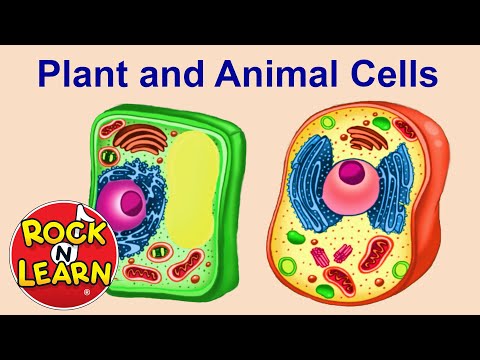Watch the full free version of our Life Science video here: https://youtu.be/gugUKAzc4O8
What are the differences between plant and animal cells? How are plant and animal cells alike? You might be surprised that there are more similarities than differences. Join Kevin as he transports to the Cellular Learning Center. You will learn that only plant cells have cell walls that are made of cellulose. Both plant and animal cells have a cell membrane surrounding the cell. It allows some things to come in and out of the cell. Both cells have cytoplasm that contains the cytoplasm – the tiny organs of a cell. The nucleus is where all of the genetic material is stored. This genetic material is made of molecules called DNA or deoxyribonucleic acid. The nucleus contains all of the information for running the cell and making new cells. Only animal cells have organelles called centrioles which aid in cell division. Both plant and animal cells have ribosomes. You will also learn about golgi bodies, endoplasmic reticulum, mitochondria, vacuoles, chloroplasts (in plant cells), and lysosomes (in animal cells). This is a lot of material that can be useful for a science test. It is designed to be at about a fourth grade level, but may be useful for students at any grade level, even much higher grades. Teachers will find this to be a wonderful introduction and overview for studying plant and animal cells at any grade level.

